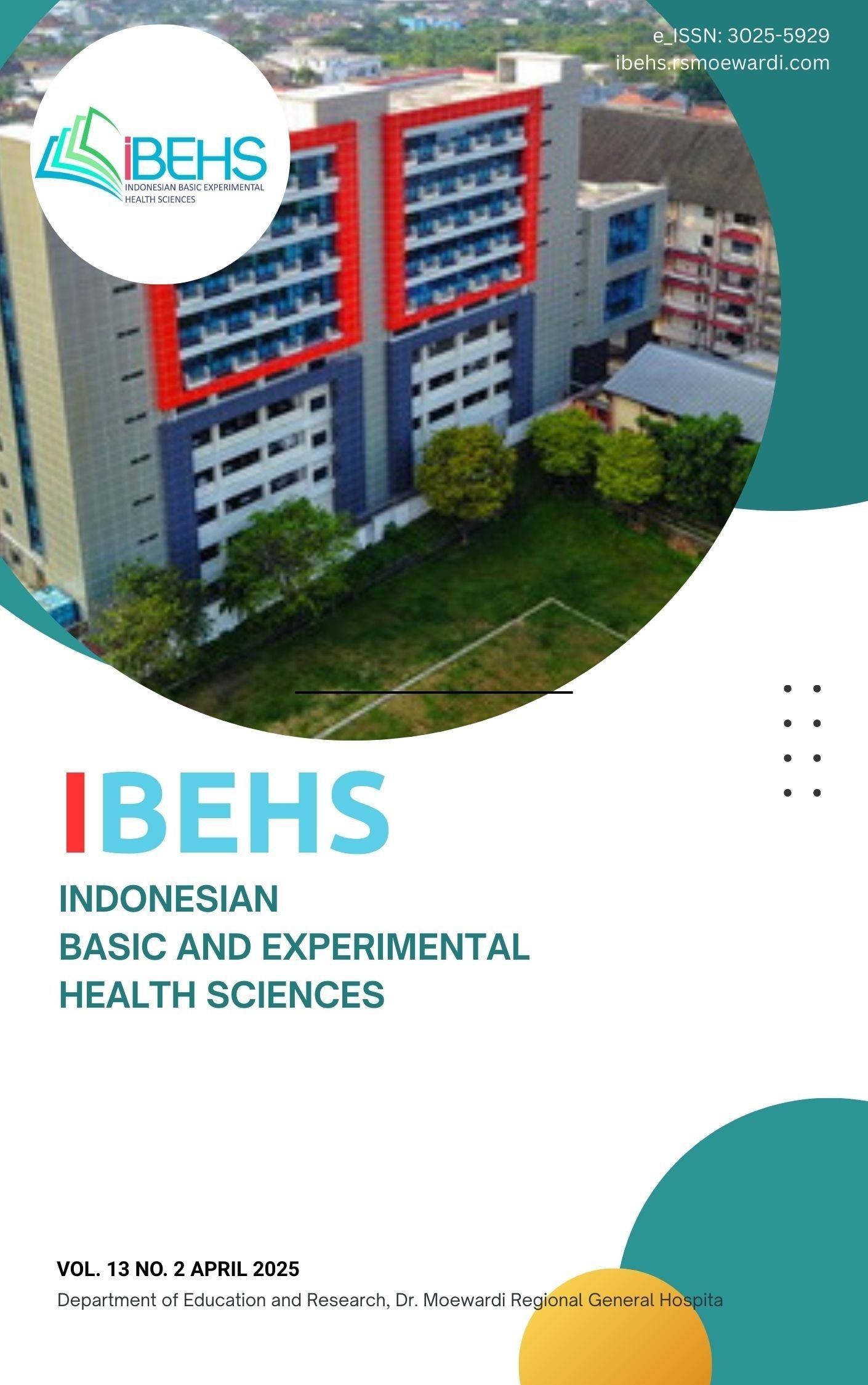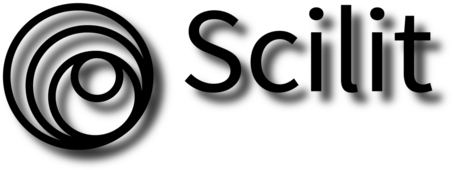Effect of the Period of Glucocorticoid Administration on Bone Quality in Patients with Autoimmune Inflammatory Rheumatism Disease (AIIRD)
DOI:
https://doi.org/10.11594/ibehs.vol13iss2pp52-58Keywords:
AIIRD, glucocorticoids, osteoporosis, bone mineral density, bone qualityAbstract
Introduction
Inflammatory autoimmune rheumatic disease (AIIRD) such as rheumatoid arthritis, systemic lupus erythematosus, and Sjogren's syndrome often requires long-term glucocorticoid therapy. Despite its effectiveness, glucocorticoids are recognized to cause decreased bone quality and increase the risk of osteoporosis. This study aims to evaluate the effect of the period of glucocorticoid administration on bone quality parameters in AIIRD patients.
Methods
This study was an observational analytical study with a cross-sectional design. A total of 28 female patients with AIIRD were divided into two groups based on the period of glucocorticoid administration: less than 24 months and more than 24 months. The parameters to be measured included bone mineral density (BMD), Collagen Type I C-Telopeptide (CTX), Vitamin D3 levels, and Calcium Ions. Data analysis was conducted using the Mann-Whitney test and the unpaired t-test with a significance level of p<0.05.
Results
There was no statistically significant difference between the two groups on all measured parameters. The mean BMD in the group of less than 24 months was 0.9471 kg/m², while in the group of more than 24 months it was 0.8920 kg/m² (p>0.05). The mean CTX also did not differ significantly between the two groups (0.2474 vs. 0.2508 ng/mL; p>0.05). Vitamin D3 and Calcium Ion levels showed similar results in the absence of significant differences (Vitamin D3: 15,596 vs. 16,255 ng/mL; Calcium Ion: 1,075 vs. 1,040 mmol/L; p>0.05).
Conclusions
The period of glucocorticoid administration does not show a significant effect on bone quality in AIIRD patients in this study. Nonetheless, regular monitoring and an individualized approach are still necessary to prevent bone complications in patients receiving long-term glucocorticoid therapy.
References
Adami, G., & Saag, K. G. (2019). Glucocorticoid-induced osteoporosis: 2019 concise clinical review. In Osteoporosis International (Vol. 30, Issue 6). https://doi.org/10.1007/s00198-019-04906-x
Den Uyl, D., Bultink, I. E. M., & Lems, W. F. (2011). Advances in glucocorticoid-induced osteoporosis. Current Rheumatology Reports, 13(3). https://doi.org/10.1007/s11926-011-0173-y
Fiehn, C. (2020). Rheumatoide Arthritis: Fortsetzung der Kortisontherapie bietet mehr Sicherheit. In Deutsche Medizinische Wochenschrift (Vol. 145, Issue 21). https://doi.org/10.1055/a-1232-6387
Han, J.-Y., Cho, S.-K., & Sung, Y.-K. (2023). Epidemiology of systemic lupus erythematosus in Korea. Journal of Rheumatic Diseases, 30(4). https://doi.org/10.4078/jrd.2023.0037
Hayat, S., & Magrey, M. N. (2020). Glucocorticoid-induced osteoporosis: Insights for the clinician. In Cleveland Clinic Journal of Medicine (Vol. 87, Issue 7). https://doi.org/10.3949/ccjm.87a.19039
Hayter, S. M., & Cook, M. C. (2012). Updated assessment of the prevalence, spectrum and case definition of autoimmune disease. In Autoimmunity Reviews (Vol. 11, Issue 10). https://doi.org/10.1016/j.autrev.2012.02.001
Kim, H., Choi, S.-M., Cho, S.-K., Jung, S.-Y., Kim, D., Jang, E. J., & Sung, Y.-K. (2018). AB1307 Disease burden of autoimmune inflammatory rheumatic diseases in south korea. https://doi.org/10.1136/annrheumdis-2018-eular.6874
Kim, H., Cho, S. K., Kim, J. W., Jung, S. Y., Jang, E. J., Bae, S. C., Yoo, D. H., & Sung, Y. K. (2020). An increased disease burden of autoimmune inflammatory rheumatic diseases in Korea. Seminars in Arthritis and Rheumatism, 50(3). https://doi.org/10.1016/j.semarthrit.2019.11.007
Yap, H. Y., Tee, S. Z. Y., Wong, M. M. T., Chow, S. K., Peh, S. C., & Teow, S. Y. (2018). Pathogenic role of immune cells in rheumatoid arthritis: Implications in clinical treatment and biomarker development. In Cells (Vol. 7, Issue 10). https://doi.org/10.3390/cells7100161
Downloads
Published
How to Cite
Issue
Section
License
Copyright (c) 2025 Yulyani Werdiningsih, indrayana Sunarso, Arief Nurudhin

This work is licensed under a Creative Commons Attribution 4.0 International License.










